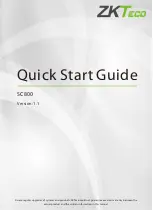
27
6.3.7 Orifice
plate
6.3.7.1 General
information
The orifice plate is a square-edged, concentric bore type, manufactured in stainless steel. It is
designed to be clamped between two flanges, within the PCD of the flange bolts. Working pressure
is up to 24 bar and working temperature is up to 290°C. Width is 3 mm on this vessels line size. In
such cases where a bevel is machined on the bore of the plate, the side with the bevel on should be
facing downstream when installed.
6.3.7.2 Installation of flow sensor
The single most important consideration, when installing an orifice plate type flowmeter is the
amount of straight pipe available on each side of the orifice plate. It is appreciated that long lengths
of straight pipe are not common in the average pump room, but it is essential that the flow through
the orifice plate is not turbulent. The only way to achieve this is, to have a long smooth approach to
the orifice plate. The minimum recommended length of straight pipe upstream of the plate is 10 x
pipe diameters and downstream of the plate, is 5 x pipe diameters. Within these distances there
should be no bends or obstructions such as valves. The effect of reducing these distances is a
considerable reduction of the accuracy of the flowmetering system.
The accuracy of the flowmeter is limited to ±10% and this is easily achieved at high flow rates.
However, at low flow rates, an orifice plate type flowmeter rapidly becomes inaccurate such that the
accuracy limit of ±10% is reached at about 1/10
th
of the maximum flow. If the orifice plate is not
installed with adequate lengths of straight pipe, the effect is a reduction of the effective measuring
range of the flowmeter and a widely fluctuating signal.
The orifice plate should be mounted in such a position so as to ensure a full pipe at all times, which
is usually best achieved in a vertical pipe. The pipeline downstream of the sensor must be arranged
to ensure that no siphoning effect is possible. To prevent siphoning in horizontal installations, the
discharge line must rise by at least 1 x pipe diameter above horizontal centre line. The rise should
be so arranged that it is located at least 5 x pipe diameters after the orifice plate.
It must be stressed that if above installation requirements cannot be met, VAF Instruments should
be consulted for advice. VAF Instruments cannot held be responsible for any flowmetering system
installed incorrectly or without due consultation.
The orifice plate is installed between the flanges using jointing material of 1.5 mm thickness.
Two pressure tapping holes are required, one on each side of the orifice plate. For pipelines larger
than 25 mm diameter, it is advisable to weld a threaded boss to the pipeline. For lines less than 25
mm diameter the pipe itself can be drilled and tapped. In both cases, the hole must be threaded for
¼” BSP. The boss upstream of the orifice plate must be sited 1 x pipe diameter from the centre-line
of the plate. The boss downstream of the orifice plate must be sited ½ x pipe diameter from the
centre line of the plate. In the case of a vertically rising line, the bosses can be sited at any position
on the circumference of the pipe. In a horizontal line, the bosses must be sited on the horizontal
centre line of the pipe.
Reference drawings
Dimensional drawing ball valve flowmeter kit Ballast Monitor
0806-1041
Installation flowmeter Ballast Monitor Mark 5/6
0806-8016
Schematic installation diagram Oilcon Monitor System with 1x dP/I
transmitter
Mark
6
0806-8035
Summary of Contents for OILCON MARK 6M
Page 112: ...111...
Page 113: ...112...
Page 114: ...113...
Page 115: ...114...
Page 116: ...115...
Page 117: ...116...
Page 118: ...117...
Page 119: ...118...
Page 120: ...119...
Page 121: ...120...
Page 122: ...121...
Page 123: ...122...
Page 124: ...123...
Page 125: ...124...
Page 128: ...127 Drawing 1 0806 0005 Sheet 1 2...
Page 129: ...128 Drawing 2 0806 0005 Sheet 2 2...
Page 130: ...129 Drawing 3 0806 1041...
Page 131: ...130 Drawing 4 0806 1075...
Page 132: ...131 Drawing 5 0806 1076...
Page 133: ...132 Drawing 6 0806 1077...
Page 134: ...133 Drawing 7 0806 1260 Sheet 1 2...
Page 135: ...134 Drawing 8 0806 1260 Sheet 2 2...
Page 136: ...135 Drawing 9 0806 1265...
Page 137: ...136 Drawing 10 0806 1267...
Page 138: ...137 Drawing 11 0806 1268...
Page 139: ...138 Drawing 12 0806 1279...
Page 140: ...139 Drawing 13 0806 1285...
Page 141: ...140 Drawing 14 0806 1286...
Page 142: ...141 Drawing 15 0806 1287...
Page 143: ...142 Drawing 16 0806 1288...
Page 144: ...143 Drawing 17 0806 1621...
Page 145: ...144 Drawing 18 0806 1622...
Page 146: ...145 Drawing 19 0806 2032...
Page 147: ...146 Drawing 20 0806 2048...
Page 148: ...147 Drawing 21 0806 2050...
Page 149: ...148 Drawing 22 0806 5019...
Page 150: ...149 Drawing 23 0806 5026...
Page 151: ...150 Drawing 24 0806 8016...
Page 152: ...151 Drawing 25 0806 8023...
Page 153: ...152 Drawing 26 0806 8035...
Page 154: ...153 Drawing 27 0806 8038 Sheet 1 4...
Page 155: ...154 Drawing 28 0806 8038 Sheet 2 4...
Page 156: ...155 Drawing 29 0806 8038 Sheet 3 4...
Page 157: ...156 Drawing 30 0806 8038 Sheet 4 4...
Page 158: ...157 Drawing 31 0806 8039...
Page 159: ...158 Drawing 32 0806 8040...
Page 160: ...159 Drawing 33 0806 8070...
Page 161: ...160 Drawing 34 0810 2010...
Page 162: ...161 Drawing 35 0871 1213...
Page 163: ...162 Drawing 36 0899 1092...
Page 164: ...163 Drawing 37 0899 1163...
Page 165: ...164 Drawing 38 0899 1249...
Page 166: ...165 Drawing 39 0899 1256...
Page 167: ...166 Drawing 40 0899 1258...
Page 168: ...167 Drawing 41 0899 1259...
















































